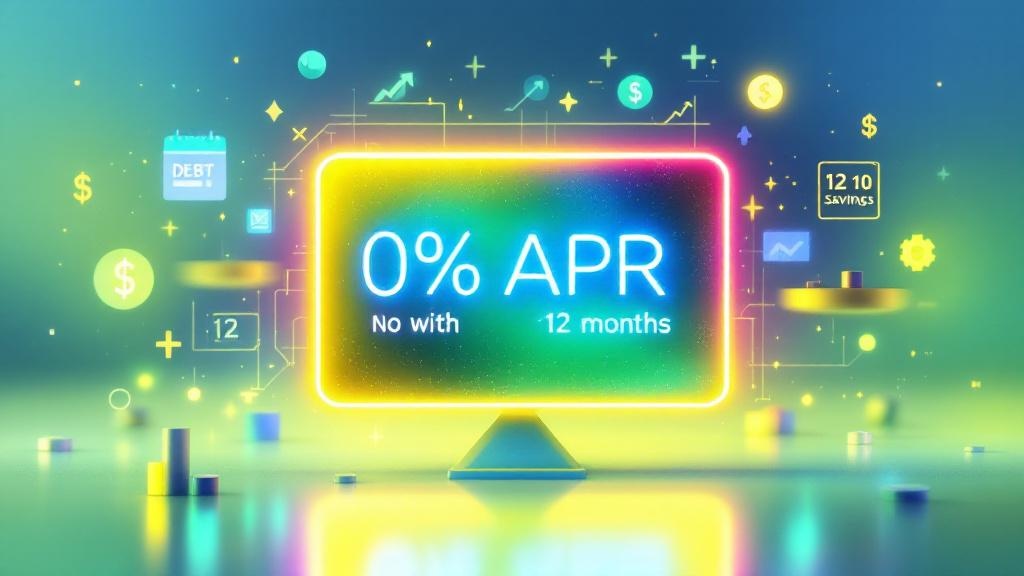Understanding credit card APR (Annual Percentage Rate) can be confusing—especially when offers like 0 APR balance transfers are thrown into the mix. But if you’re managing debt or looking to save on interest, getting a grip on these terms is crucial.
In this guide, we’ll break down what credit card APR really means, how it affects your finances, and how a 0% APR balance transfer can be a powerful tool in your debt payoff strategy.
💡 What Is a Credit Card APR?
APR stands for Annual Percentage Rate, and it represents the cost of borrowing money on your credit card. In simple terms, it’s the interest rate you’ll pay if you carry a balance from month to month.
There are different types of APR:
Purchase APR: Charged on everyday purchases if you don’t pay the balance in full.
Cash Advance APR: Typically higher and applies when you withdraw cash using your credit card.
Penalty APR: A much higher rate applied if you miss payments.
Balance Transfer APR: Charged when you move debt from one credit card to another.
And that’s where 0 APR balance transfers come in.
🔄 What Is a 0 APR Balance Transfer?
A 0 APR balance transfer means you move your existing credit card debt to a new card that doesn’t charge interest for a limited time. This is called the introductory period, which can range from 12 to 21 months, depending on the offer.
🎯 Real-Life Example:
Suppose you owe ₹1,50,000 on a card with a 24% APR. That’s roughly ₹3,000 in interest per month. If you qualify for a 0% APR for 18 months balance transfer card, you could save up to ₹54,000 in interest over those 18 months—money you can use to pay down your balance faster.
💳 How Does a 0% APR Introductory Offer Work?
Most credit card companies offer 0 APR introductory offers to attract new customers. Here’s how it typically works:
Apply and get approved for a credit card with a 0% balance transfer offer.
Transfer your existing balance within a set time frame (usually 30–90 days).
Pay no interest during the promotional period.
After the intro period ends, standard APR applies to any remaining balance.
✅ Benefits of a 0 APR Balance Transfer
Choosing the right balance transfer strategy can offer major benefits:
1. Save on Interest
With low interest balance transfer cards, more of your payment goes toward reducing your principal, not interest.
2. Faster Debt Payoff
With no interest accumulating, you can pay off your debt more quickly—often in 12–18 months.
3. Simplified Finances
Consolidate multiple debts onto one card, making it easier to manage payments.
4. Boost Your Credit Score
Paying down debt faster improves your credit utilization ratio, a key factor in credit scoring.
⚠️ Important Balance Transfer Terms to Know
Understanding the fine print is essential. Keep an eye out for:
Balance Transfer Fee: Usually 3–5% of the amount transferred.
Transfer Window: You may need to transfer within 30–60 days of account opening.
Standard APR: After the intro period, this kicks in and can be as high as 20% or more.
Payment Allocation: Payments may go toward lower-interest balances first.
🔍 Pro Tip: Look for no fee balance transfer 0 APR credit cards to save even more.
📝 How to Choose the Best 0 APR Balance Transfer Card
Here’s what to look for in the best 0 APR balance transfer credit cards for 2025:
✅ Key Features:
Introductory 0% APR term: Aim for 12–18 months minimum.
No balance transfer fee: Especially useful if transferring large amounts.
Reasonable standard APR: Just in case you still carry a balance after the intro ends.
Rewards or perks: Some cards still offer cashback or travel rewards.
🧠 Remember: Not all cards are created equal. Long-term 0 APR balance transfer cards can offer greater breathing room, but approval may depend on your credit score.
💼 Who Should Use a 0% APR Balance Transfer Offer?
These offers aren’t for everyone. Here’s who should consider them:
Best for:
Those with high-interest credit card debt
People with good to excellent credit
Individuals looking to pay off debt quickly within the promo period
Avoid if:
You tend to carry a balance long-term
You’re prone to late payments (which can cancel the 0% APR)
You don’t qualify for a low or no fee transfer card
🛠️ Steps to Transfer Credit Card Debt with 0 APR
Here’s how to execute a smart balance transfer strategy:
Compare offers for balance transfer credit cards with no fees.
Check eligibility and your credit score.
Apply for the card with the most favorable terms.
Initiate the transfer (you’ll need account details of your old card).
Pay off the balance within the 0% period to maximize savings.
🔄 Always keep making minimum payments on your old card until the transfer is confirmed.
🚩 Pitfalls to Avoid
Before diving in, beware of these common traps:
Missing a payment: Can void your 0% offer and trigger the penalty APR.
Not paying off in time: Interest kicks in after the promo ends.
New purchases: May not be included in the 0% offer—check the fine print.
Overspending: A 0% card isn’t free money—it’s a tool to help you save.
🧩 Other Financial Debt Relief Options
If a balance transfer doesn’t suit your situation, here are a few alternatives:
Debt consolidation loan
Personal loan with fixed interest
Debt management plans
Negotiating with creditors
Credit counseling
📌 Final Thoughts: Is a 0 APR Balance Transfer Right for You?
A 0% APR credit card balance transfer promotion can be a game-changer if used wisely. It helps you escape high credit card interest rates, take control of your finances, and possibly become debt-free faster.
Just be sure to read the balance transfer terms, compare offers, and stick to a realistic payoff plan.
❓FAQs About 0 APR Balance Transfers
1. What is the typical duration for a balance transfer 0 APR for 12 months or more?
Most offers range from 12 to 21 months. The longer the 0% period, the more time you have to pay down debt without interest.
2. Are there balance transfer credit cards with no fees?
Yes! Some no fee balance transfer 0 APR credit cards exist, though they usually require excellent credit.
3. Will applying for a 0% APR card hurt my credit score?
A single inquiry may cause a small dip, but responsible use can improve your score over time by lowering your credit utilization.
4. Can I transfer all types of debt to a 0 APR credit card?
Most cards only allow credit card-to-credit card transfers. Personal loans or student loans typically don’t qualify.
5. What happens after the 0% APR period ends?
You’ll begin accruing interest at the card’s standard APR, which can be high. It’s best to pay off the balance before then.
6. Is a balance transfer better than a personal loan for debt?
It depends. If you qualify for a long 0% APR offer, a balance transfer can be cheaper than a loan—if paid off on time.
7. Can I use a balance transfer card for new purchases?
Sometimes, but many cards charge regular APR on purchases, not 0%. Always read the credit card interest-free promotions terms.
📈 Ready to Take Control of Your Credit Card Debt?
Whether you’re looking for the best 0 APR balance transfer credit cards for 2025 or trying to escape high-interest rates, a balance transfer could be your ticket to smarter debt management. Use this guide as your roadmap—and remember, financial freedom starts with informed decisions.








Comments (0)